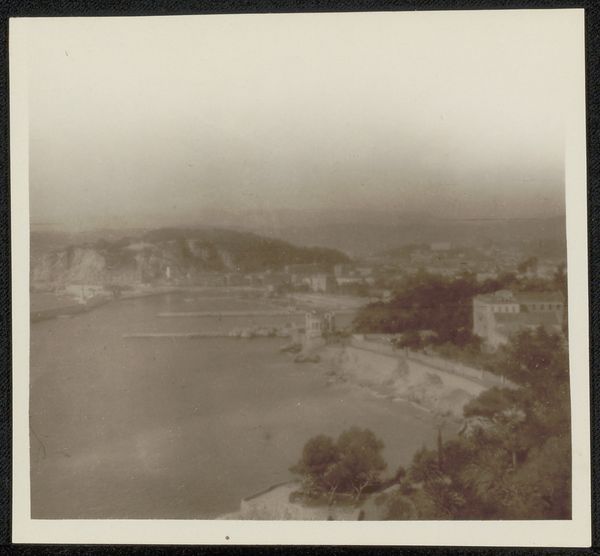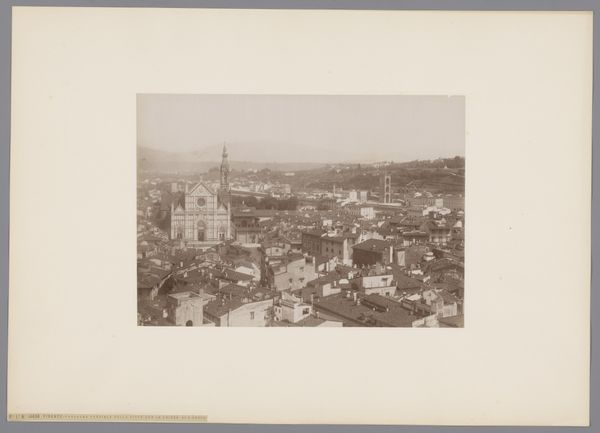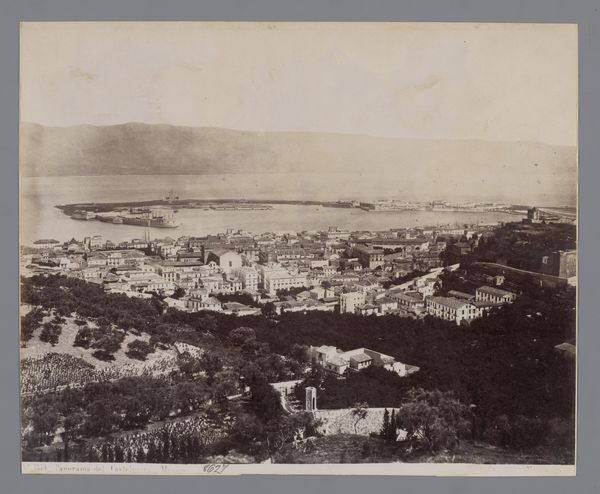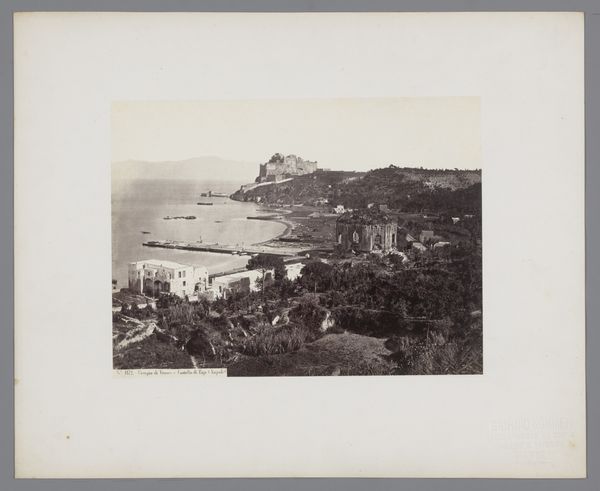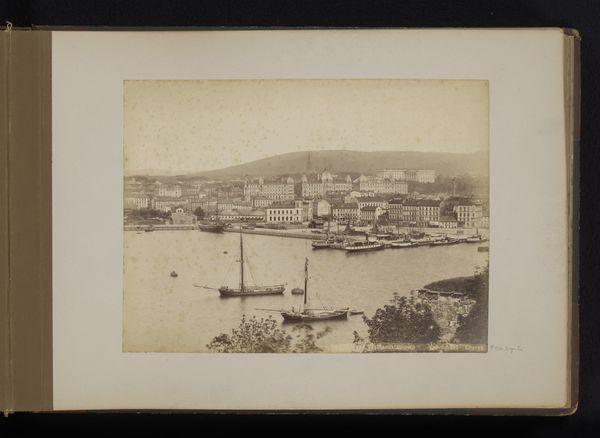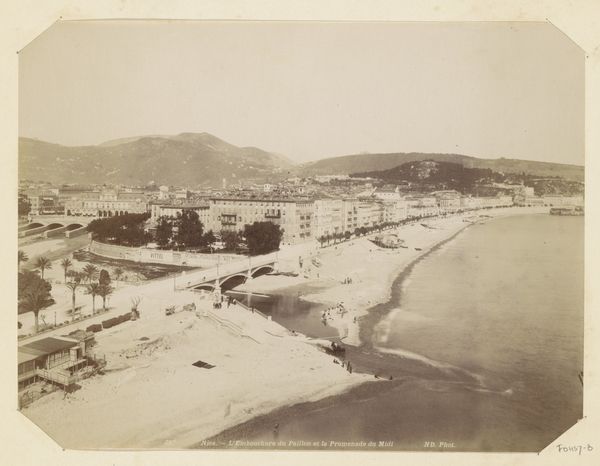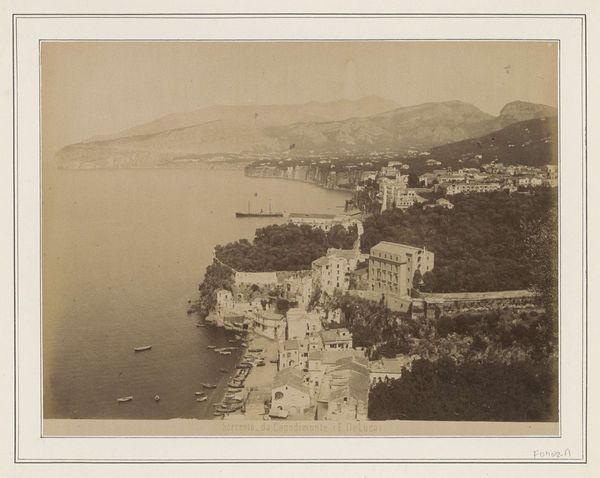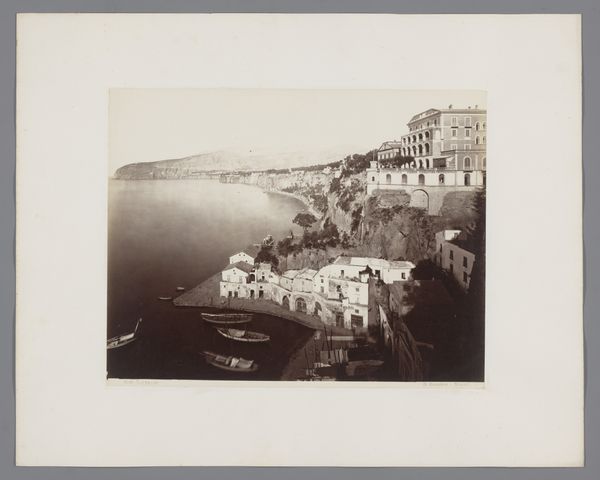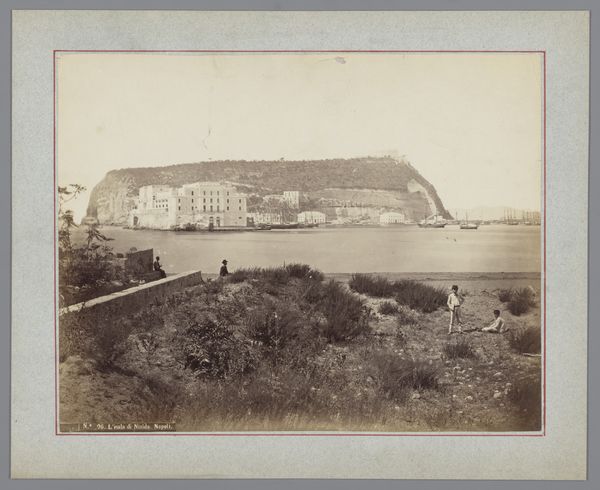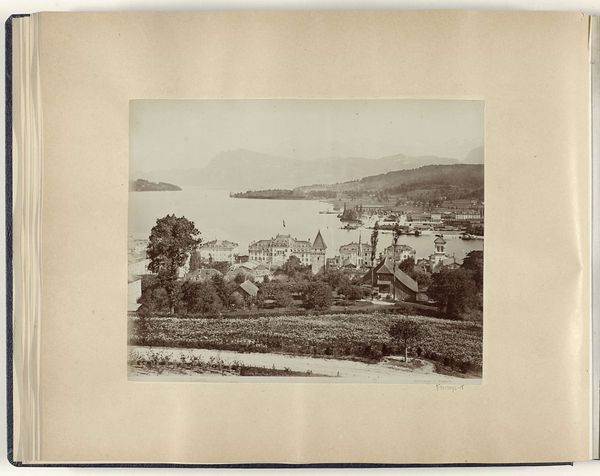
print, photography
# print
#
landscape
#
photography
#
cityscape
#
tonal art
Dimensions: height 317 mm, width 445 mm
Copyright: Rijks Museum: Open Domain
Curator: Let's explore Giacomo Brogi's photographic print, "Gezicht op een deel van Napels, Italië," dating from 1864 to 1881. Editor: Immediately striking is the panorama—the scale! It feels almost documentary, yet there's a deliberate composition. It pulls me into imagining life within this 19th-century cityscape. Curator: The print offers a detailed visual record. Think about the labor involved: preparing the photographic plates, the careful process of developing and printing, each stage demanding precise knowledge and physical skill. Consider also the economy: who could afford this print, who controlled the narrative it presented of Naples? Editor: Exactly. Looking closer, I see a stark contrast between the picturesque bay and the dense, arguably overcrowded urban sprawl. The perspective, from above, carries a weight of social observation—a potential commentary on class and living conditions during Italy’s unification period. Curator: It's also an important historical document. By the mid-19th century, photography was transforming how landscapes were represented and consumed. This wasn't just art, it was also information. What we now might take for granted required considerable technology and distribution networks. Editor: Agreed. And within that context, who did this serve? These scenic views of Naples likely catered to a rising class of tourists and the elites, essentially commodifying an idealized vision of Italy. Who benefitted from showing only a segment of Neapolitan society? What voices or experiences are left out? Curator: It does remind us that every image, then as now, is constructed and has an ideological component, deliberately or inadvertently framing our understanding. Editor: Precisely! Reflecting on it now, I notice this work pushed me to consider visual hierarchies. A privileged, even colonial, gaze perhaps. This print becomes more than just a view; it's a tool for critically understanding history. Curator: And for me, the print really highlights the tangible and the historical intersection. Brogi's careful work allows us a valuable window to see the landscape of yesterday, the physical object adding much to how we comprehend the processes behind it.
Comments
No comments
Be the first to comment and join the conversation on the ultimate creative platform.

